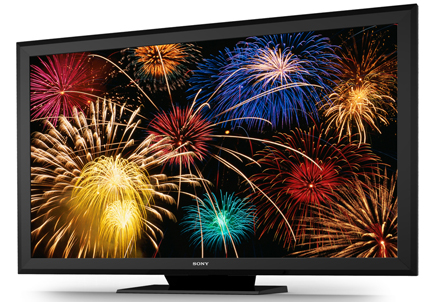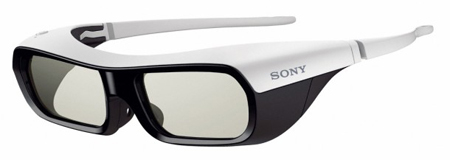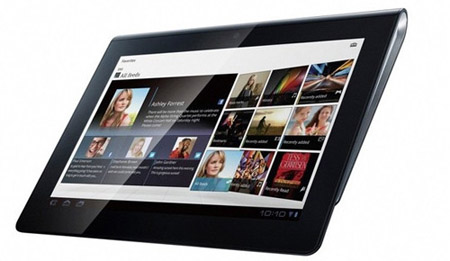Sony's TV strategy: the bigger picture

Sony has committed itself to focusing on picture quality as the No.1 priority in developing its 2012 TVs.
The shift in focus follows research by the Japanese electronics giant, which is putting picture and sound quality back at the heart of its TV strategy.
“Frankly we were shocked that customers rated 3D and web browsing lower than expected when we asked them what their key buying motivations were,” says Hiroshi Sakamoto, deputy senior general manager, home entertainment business planning and strategy division at Sony.
Speaking at a press briefing at Sony’s Tokyo HQ earlier today, Sakamoto said: “Everyone expects our TVs to produce a beautiful picture – sometimes we didn’t focus enough on that aspect.”
In a global survey, web browsing was ranked last in a list of consumer requirements when buying a new TV – and 3D barely got a mention at all. Picture quality was ranked No.1, followed by screen size, price and then sound quality.
Perhaps even more surprisingly, brand loyalty is becoming less important when buying a TV than it used to be, with Sony no longer an automatic choice (and Korean companies Samsung and LG snapping at its heels). That’s clearly taken Sony by surprise too.
The global recession isn’t helping either. Although 208 million LCD TVs were sold in 2011, Sakamoto admits that the market for flatscreen TVs in Europe, and particularly the UK, is flat: “We can’t expect the double digit growth we had a few years ago.”
The latest hi-fi, home cinema and tech news, reviews, buying advice and deals, direct to your inbox.
And then there’s the fact that Sony is losing money on every TV it sells, according to outgoing CEO and president Sir Howard Stringer. Couple that with projected losses at the TV division for the current financial year of Y175bn (£1.45bn), and it’s clear radical surgery is needed.

Cutting losses is essential to survival
Sony has already said it will halve TV production from 40 million units to 20 million in an attempt to reduce those losses, and realises it must radically rethink its TV strategy to survive.
That strategy is now beginning to take shape. “We have the hardware, software, content and distribution to enable us to revitalise again,” says Sakamoto. “We see the TV as the centre, the hub, of home entertainment. There are 900 million connected devices in the world – our challenge is to help people watch, listen and share.”
With Sony Pictures, Sony Music and Sony Home Entertainment all living under the corporate umbrella, bringing all that content together on multiple devices is a key priority. Like Apple and others, Sony wants to lock customers into its own eco system. “We have to leverage all our content across our platforms, that’s the task of our new CEO Kazuo Hirai.”
But first, the company knows it has to get its TVs right. Its core focus is on providing “the best sound and picture ever”, using the Bravia X-Reality /X-Reality Pro Engine, Full HD resolution, Intelligent Peak LED backlighting and active-shutter 3D technology.
Picture resolution, colour, contrast, sound, design and usability are the new key words. Unlike its Korean rivals, Sony doesn’t seem to be putting too much emphasis on new gimmicks such as voice and motion control, but rather returning to basics.

Committed to active-shutter 3D
And despite lukewarm consumer reaction to 3D in general, the firm remains committed to active-shutter 3D. “We don’t deny the advantages of passive 3D technology,” says Sakamoto. “It’s cheap, the glasses are light and affordable.
"But passive only gives half the resolution. We believe that the best picture quality for true Full HD (1080p) 3D comes from the active-shutter type.”
For 2012, a key aim is to reduce crosstalk when viewing 3D material. “With a 100Hz panel we can’t eliminate crosstalk completely, some ghosting still remains. Some of our 2011 TVs were criticised for being great for 2D, but not so good for 3D.”
That appears to be a criticism Sony has taken on board. So it is now introducing a new 4x high-speed 200Hz panel to produce “ultra-smooth motion and better 3D quality”, combined with auto 3D depth adjustment for a more comfortable viewing experience.
And with more films coming in 3D – among them Men in Black 3, Star Wars Episode 1 and Titanic – plus a growing catalogue of PS3 3D games, Sony believes the content to bring 3D to life is finally coming through.
Its 2012 TVs will also be compatible with YouTube HD and 3D content.

Intelligent connectivity
The other key part of Sony’s TV strategy is what it calls ‘intelligent connect’. This is basically the ability to share and control all your digital content between devices, be it the TV, tablet or smartphone.
So users can ‘catch and throw’ content from an iPad, iPhone, Sony tablet, Android device or Xperia phone to their television whenever they want.
And a direct wi-fi mode allows instant connection of Vaio laptops, Cybershot high-end cameras and Xperia smartphones to your Sony telly.

Finally, what of Google TV? It’s had a troubled start in the US since the first Google set-top box was launched there in October 2010. Again, Sakamoto is refreshingly frank about this: “Yes, the initial launch was disappointing – Android Marketplace wasn’t ready. But there is plenty of content available now.”
This year will see Sony begin a renewed push on Google TV, with the launch of two set-top boxes in the US and Europe this summer, as announced at CES 2012. One will be a TV streaming box only (NSZ-GS7), the other will include a built-in Blu-ray drive (NSZ-GP9).
And yes, there will be a new touchpad controller with a full, backlit keyboard, motion control and voice search.
But those latter two functions are not, it would seem, the top priority. To get itself back in the TV game, and profitable again, Sony is convinced that picture quality and interconnectivity between devices are the key to success.
It's even ploughing its own route when it comes to developing next-generation screens, having unveiled at CES 2012 its 55in Crystal LED prototype, thus bucking the OLED trend adopted by many of its rivals.
Sony isn't afraid to be different, and the decision to put picture quality back at the heart of its TV strategy is one that will be welcomed by many home cinema enthusiasts. Here's hoping that strategy works.
Andy is Global Brand Director of What Hi-Fi? and has been a technology journalist for 30 years. During that time he has covered everything from VHS and Betamax, MiniDisc and DCC to CDi, Laserdisc and 3D TV, and any number of other formats that have come and gone. He loves nothing better than a good old format war. Andy edited several hi-fi and home cinema magazines before relaunching whathifi.com in 2008 and helping turn it into the global success it is today. When not listening to music or watching TV, he spends far too much of his time reading about cars he can't afford to buy.

